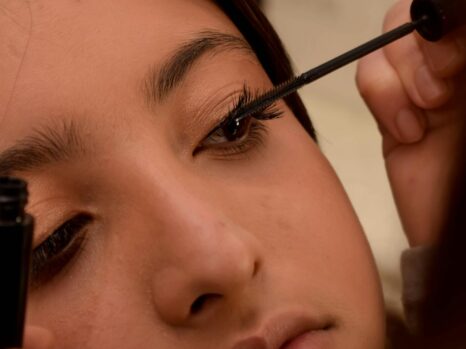Palm oil gives rise to many controversies. Usually, it’s consumed in its purified form (due to refining process). Obtained in this way white fat is reported to have adverse influence on our health, therefore we should do our best to avoid it. On the other hand, non-refined palm oil contains precious vitamins and minerals which serve well not only our health but also our beauty; it’s colour is red. Find out what properties palm oil has and what beauty purposes in particular it serves.
Palm oil INCI: Elaeis Guineensis (Palm) oil
Palm oil – composition and properties
Palm oil and how it affects skin
Palm oil contains tocopherol which is categorised as vitamin E compound. Tocopherol is used to treat skin ailments and slow down skin ageing processes, which makes it a very popular component of many anti-age cosmetics.
Palm oil and how it affects skin and hair
Palm oil is frequently added to various cosmetics focusing on face, body and hair care. As a popular ingredient included in shampoo and hair soaps, it cleanses skin and sets skin free from grease and dirt. What’s interesting, contained in palm oil natural compounds replace synthetic substances, such as SLS, and take part in maintaining sebum production. Moreover, palm oil gifts shampoos and conditioners with caring properties. To clarify, it effectively takes care of skin thanks to delivering rejuvenating and moisturising action, and this promotes elasticity and softness.
Palm oil and how it affects hair
Palm oil contains vitamins A and E as well as beta-carotene, which in a significant way contribute to improving hair condition. As a consequence of vitamin A shortage in organism, hair starts falling out and becomes dry, brittle and weak. Vitamin E nourishes hair bulbs and scalp, thanks to which strands become stronger and start growing faster. When it comes to beta-carotene, it’s pro-vitamin A, a substance thanks to which organism is able to produce vitamin A.
How does palm oil influence hair condition?
Palm oil nourishes, moisturises and regenerates hair. Also, it smooths and softens strands. Moreover, this oil is able to rebuild split ends and strengthen hair bulbs. It reinforces natural hydro-lipid barrier of scalp, combats dry dandruff and other scalp ailments. Moreover, it facilitates detangling and hair styling. It’s also worth mentioning that palm oil protects hair from adverse action delivered by solar radiation, both salty and chlorinated water as well as from chemical and mechanical damages.
Which hair types does palm oil suit best?
Palm oil conditions low porosity hair best. Low porosity hair is straight, smooth and sleek. It’s really hard to style such strands. If overburdened by improper cosmetics, it loses volume and starts getting too greasy. For that reason, in order to perform hair oiling, you should apply substances characterized by light consistency, for example palm oil. Moreover, palm oil works on hair surface and inside hair bulbs. Thanks to this, both hair and its bulbs are regenerated, reinforced and nourished from the roots.
Palm oil – cost
Price of palm oil depends on its form; in other words, whether we want to buy refined or non-refined version of this natural substance. The former one is considered as bad for our health, which is why its price is relatively low. Non-refined palm oil, in turn, has positive influence on our health and appearance therefore its price is higher.
Palm oil – comments
All things considered, palm oil receives positive feedback due to its wide range of application and its health promoting properties. This oil is appreciated both by healthily diet lovers as well as beauty-maniacs. Those focusing on the appearance recognize palm oil as a perfect means of improving skin (face and body) and hair condition.















Leave a Reply